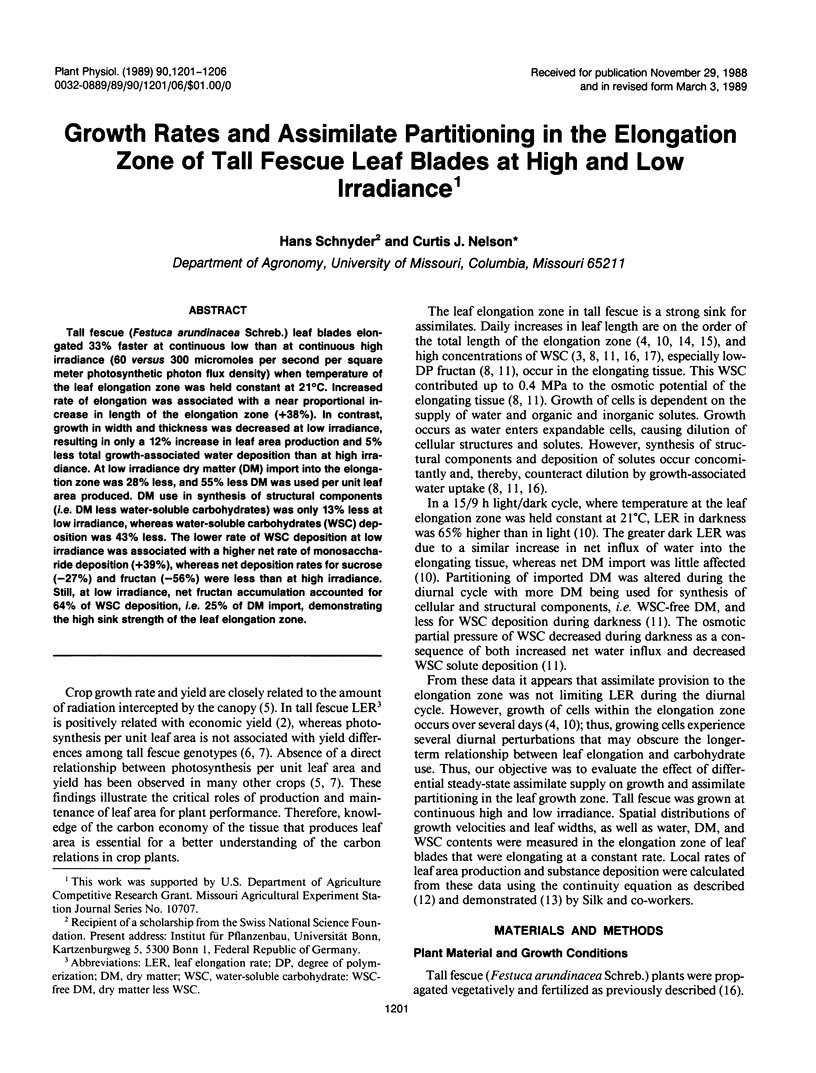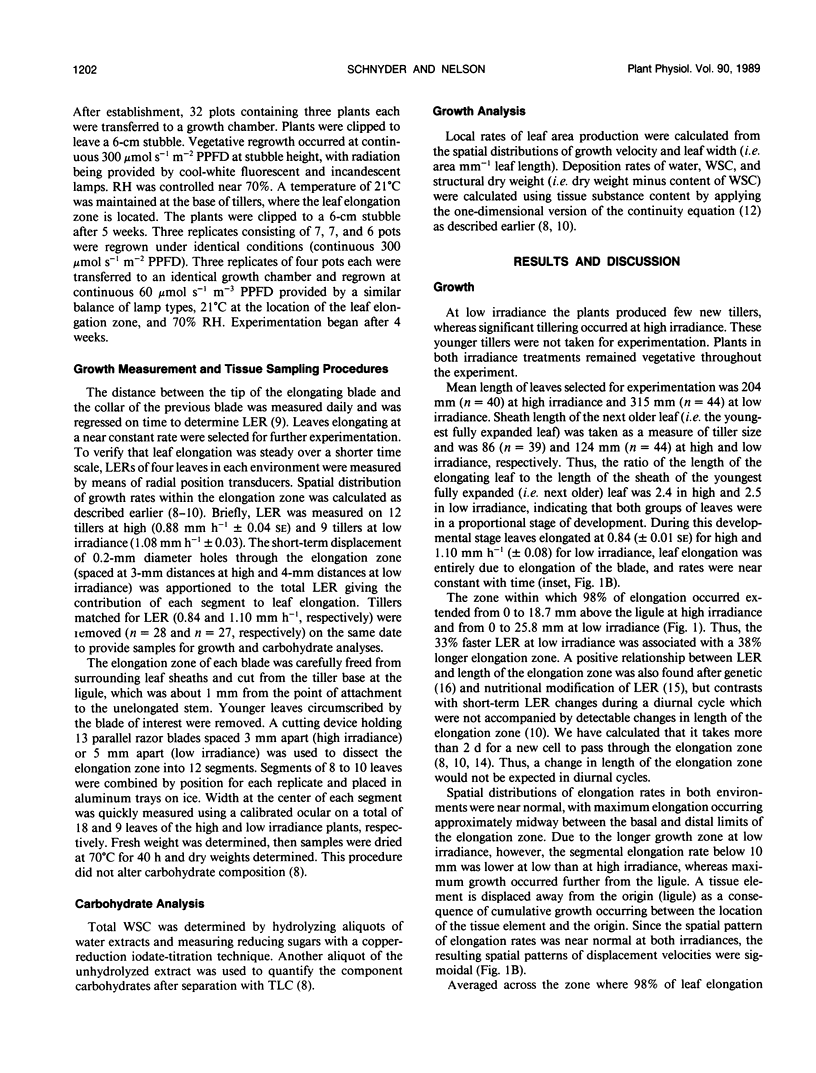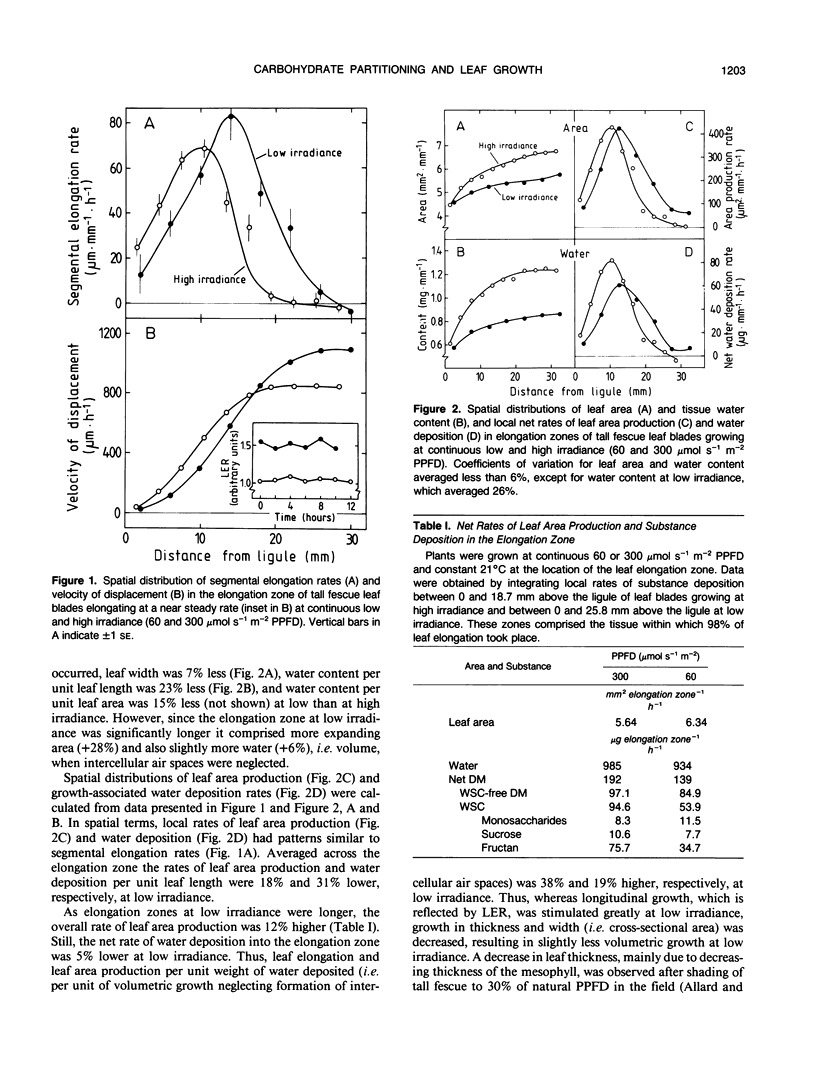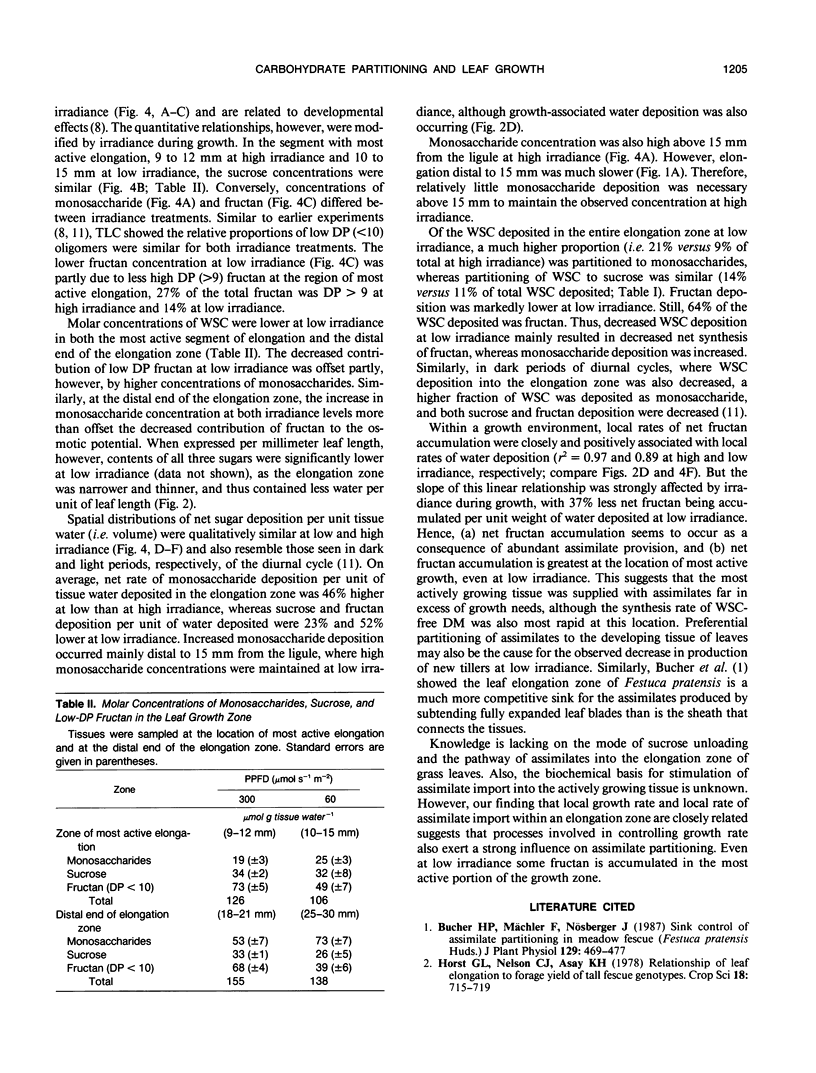Abstract
Tall fescue (Festuca arundinacea Schreb.) leaf blades elongated 33% faster at continuous low than at continuous high irradiance (60 versus 300 micromoles per second per square meter photosynthetic photon flux density) when temperature of the leaf elongation zone was held constant at 21°C. Increased rate of elongation was associated with a near proportional increase in length of the elongation zone (+38%). In contrast, growth in width and thickness was decreased at low irradiance, resulting in only a 12% increase in leaf area production and 5% less total growth-associated water deposition than at high irradiance. At low irradiance dry matter (DM) import into the elongation zone was 28% less, and 55% less DM was used per unit leaf area produced. DM use in synthesis of structural components (i.e. DM less water-soluble carbohydrates) was only 13% less at low irradiance, whereas water-soluble carbohydrates (WSC) deposition was 43% less. The lower rate of WSC deposition at low irradiance was associated with a higher net rate of monosaccharide deposition (+39%), whereas net deposition rates for sucrose (−27%) and fructan (−56%) were less than at high irradiance. Still, at low irradiance, net fructan accumulation accounted for 64% of WSC deposition, i.e. 25% of DM import, demonstrating the high sink strength of the leaf elongation zone.
Full text
PDF





Selected References
These references are in PubMed. This may not be the complete list of references from this article.
- Macadam J. W., Volenec J. J., Nelson C. J. Effects of nitrogen on mesophyll cell division and epidermal cell elongation in tall fescue leaf blades. Plant Physiol. 1989 Feb;89(2):549–556. doi: 10.1104/pp.89.2.549. [DOI] [PMC free article] [PubMed] [Google Scholar]
- Schnyder H., Nelson C. J., Coutts J. H. Assessment of spatial distribution of growth in the elongation zone of grass leaf blades. Plant Physiol. 1987 Sep;85(1):290–293. doi: 10.1104/pp.85.1.290. [DOI] [PMC free article] [PubMed] [Google Scholar]
- Schnyder H., Nelson C. J. Diurnal growth of tall fescue leaf blades : I. Spatial distribution of growth, deposition of water, and assimilate import in the elongation zone. Plant Physiol. 1988 Apr;86(4):1070–1076. doi: 10.1104/pp.86.4.1070. [DOI] [PMC free article] [PubMed] [Google Scholar]
- Schnyder H., Nelson C. J. Growth Rates and Carbohydrate Fluxes within the Elongation Zone of Tall Fescue Leaf Blades. Plant Physiol. 1987 Oct;85(2):548–553. doi: 10.1104/pp.85.2.548. [DOI] [PMC free article] [PubMed] [Google Scholar]
- Schnyder H., Nelson C. J., Spollen W. G. Diurnal Growth of Tall Fescue Leaf Blades : II. Dry Matter Partitioning and Carbohydrate Metabolism in the Elongation Zone and Adjacent Expanded Tissue. Plant Physiol. 1988 Apr;86(4):1077–1083. doi: 10.1104/pp.86.4.1077. [DOI] [PMC free article] [PubMed] [Google Scholar]
- Silk W. K., Walker R. C., Labavitch J. Uronide Deposition Rates in the Primary Root of Zea mays. Plant Physiol. 1984 Mar;74(3):721–726. doi: 10.1104/pp.74.3.721. [DOI] [PMC free article] [PubMed] [Google Scholar]
- Volenec J. J., Nelson C. J. Carbohydrate Metabolism in Leaf Meristems of Tall Fescue : II. Relationship to Leaf Elongation Rates Modified by Nitrogen Fertilization. Plant Physiol. 1984 Mar;74(3):595–600. doi: 10.1104/pp.74.3.595. [DOI] [PMC free article] [PubMed] [Google Scholar]
- Volenec J. J., Nelson C. J. Carbohydrate metabolism in leaf meristems of tall fescue : I. Relationship to genetically altered leaf elongation rates. Plant Physiol. 1984 Mar;74(3):590–594. doi: 10.1104/pp.74.3.590. [DOI] [PMC free article] [PubMed] [Google Scholar]


